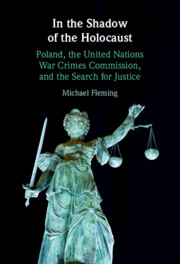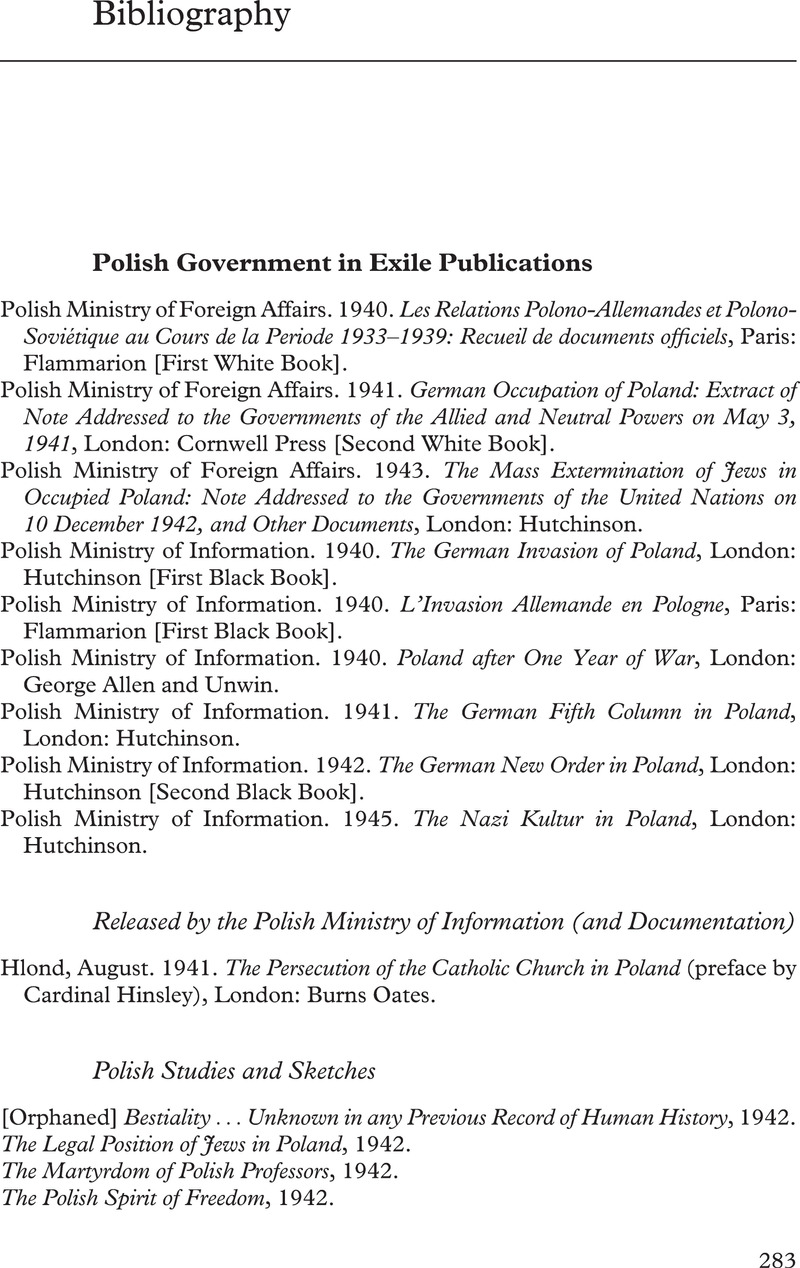 In the Shadow of the Holocaust
In the Shadow of the Holocaust Book contents
- In the Shadow of the Holocaust
- In the Shadow of the Holocaust
- Copyright page
- Contents
- Acknowledgements
- Abbreviations
- Introduction
- 1 Invasion and Occupation
- 2 Seeking a Response
- 3 Polish Soft Diplomacy
- 4 War Crimes and the Path towards the UNWCC
- 5 The UNWCC, Law, and Inter-Allied Politics
- 6 The Polish Government in Exile’s War Crimes Office
- 7 Pursuing Justice across the Iron Curtain
- 8 Poland, the UNWCC, and the Cold War
- Conclusion
- Bibliography
- Index
- References
Bibliography
Published online by Cambridge University Press: 23 December 2021
- In the Shadow of the Holocaust
- In the Shadow of the Holocaust
- Copyright page
- Contents
- Acknowledgements
- Abbreviations
- Introduction
- 1 Invasion and Occupation
- 2 Seeking a Response
- 3 Polish Soft Diplomacy
- 4 War Crimes and the Path towards the UNWCC
- 5 The UNWCC, Law, and Inter-Allied Politics
- 6 The Polish Government in Exile’s War Crimes Office
- 7 Pursuing Justice across the Iron Curtain
- 8 Poland, the UNWCC, and the Cold War
- Conclusion
- Bibliography
- Index
- References
Summary

- Type
- Chapter
- Information
- In the Shadow of the HolocaustPoland, the United Nations War Crimes Commission, and the Search for Justice, pp. 283 - 302Publisher: Cambridge University PressPrint publication year: 2022


